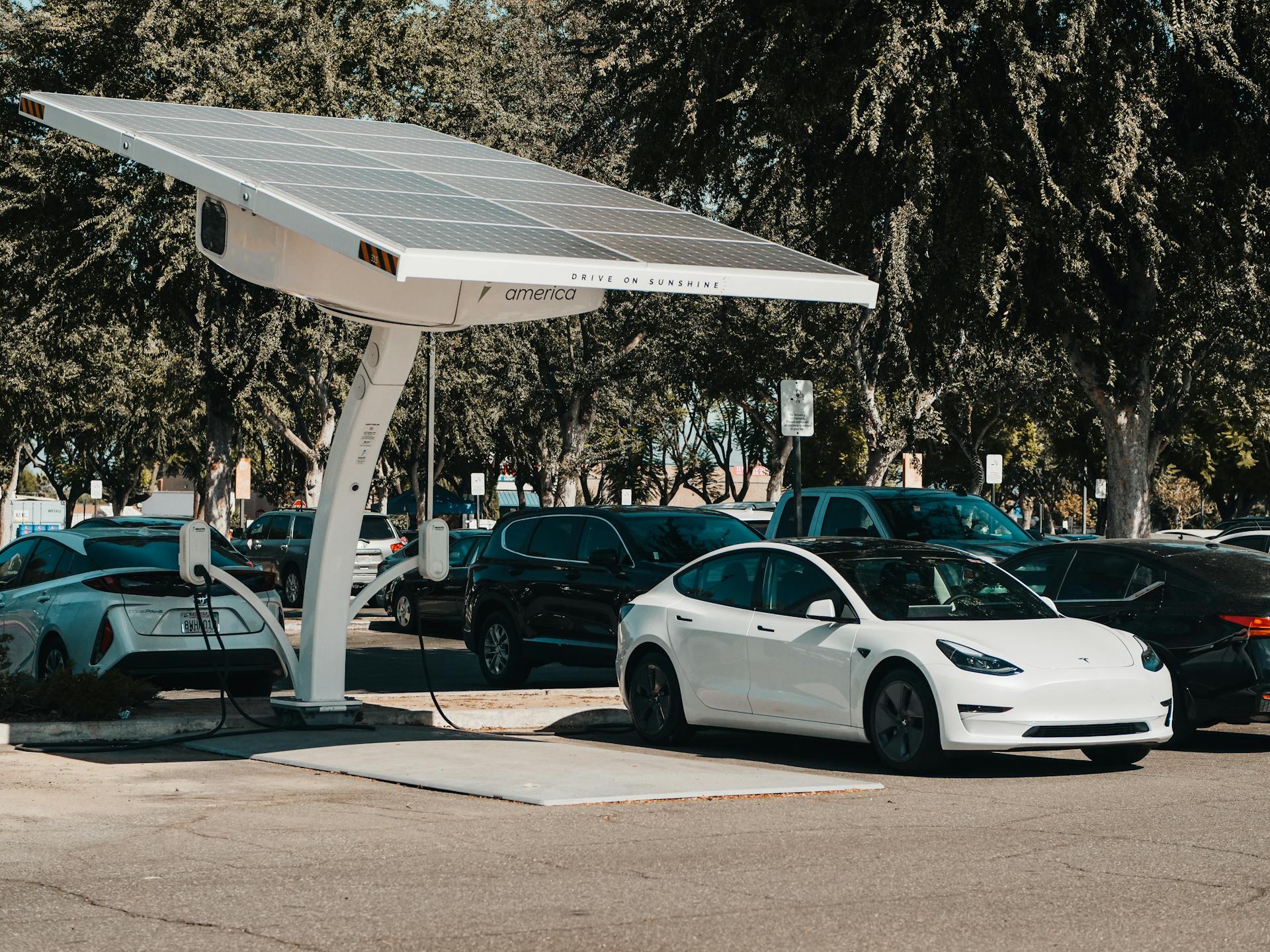Tesla’s high-voltage battery system uses advanced modules, sensors, thermal controls, and electronics managed by the Battery Management System (BMS). When the BMS detects abnormal conditions—such as temperature shifts, imbalance, or isolation changes—it triggers a warning on the touchscreen.
These alerts don’t always mean the battery is failing. Many are protective responses to temporary conditions like thermal fluctuation, voltage variation, or software behavior. At EV Reviver, our certified technicians perform precise HV diagnostics to determine whether the issue requires repair, recalibration, or—only when necessary—full pack replacement, restoring performance while avoiding costly dealership pricing.
1. How the Tesla HV Battery System Works
Tesla’s HV battery is built from groups of lithium-ion cells organized into modules (Model S/X) or integrated modules (Model 3/Y). The Battery Management System (BMS) continuously monitors:
- Cell voltages
- Temperature distribution
- Charge and discharge rates
- Isolation levels
- Thermal system performance
The BMS communicates with the vehicle’s drive systems, charger, cooling components, and safety controllers to maintain optimal performance and prevent damage.
When the BMS detects an abnormal reading—such as imbalance, isolation drop, overheating, or unexpected sensor input—it triggers battery warning messages or power limitations. These alerts notify the driver that diagnostic service is needed, but they do not automatically reveal the exact root cause or require immediate battery replacement.
Signs of HV Battery Problems in Tesla Vehicles
HV battery issues often start subtly before becoming more severe. Look for these common early indicators:
- Dashboard Alerts: Messages like “Maximum battery charge level reduced,” “Electrical system power reduced,” or “Battery needs service” signal that the BMS detected an abnormal condition requiring diagnostic evaluation.
- Reduced Range or Charging Performance: Slower charging, reduced Supercharging speeds, or inconsistent range readings can point to voltage imbalance, thermal issues, or cell aging.
- Performance Limitations: Unexpected loss of acceleration, power limits, or the vehicle entering limp mode may indicate battery protection behavior, thermal derating, or HV isolation concerns.
- Temperature Irregularities: Warnings about high or low battery temperature may occur due to coolant flow issues, pump failures, blocked loops, or failing temperature sensors.
If any of these symptoms appear, scheduling a diagnostic promptly is critical. Early detection allows for targeted repairs—such as thermal system correction, contactor evaluation, or module-level work (Model S/X)—before the issue progresses into more extensive HV battery failure.
3. Common Tesla HV Battery Error Codes Explained
Tesla’s Battery Management System (BMS) logs internal diagnostic codes when it detects a condition that may affect charging, performance, or safety. These codes are primarily engineering-level identifiers used inside Toolbox and do not translate directly to simple explanations like “module communication loss” or “sensor failure.”
Below is an overview of what these code families generally indicate, based on how they appear in Tesla’s internal systems.
1. BMS_u029 — Reduced Maximum Charge Level
The BMS_u029 fault appears in Tesla vehicles when the Battery Management System detects conditions that make it unsafe or unreliable to allow the pack to charge to its normal full capacity. Instead of indicating lost module communication, this code means the BMS has reduced the battery’s maximum allowable State of Charge, which can limit the vehicle to 30–50% of its typical driving range.
This protective action is triggered when the system senses issues such as:
Cell imbalance within the battery pack
Irregular or unstable voltage readings
Temperature inconsistencies across modules or sensors
Reduced confidence in sensor data or questionable measurement accuracy
By restricting usable capacity, the BMS prevents further stress on the high-voltage system and helps avoid potential battery damage. While this safeguard preserves long-term battery health, it’s also a clear sign the pack needs professional evaluation to determine whether the issue can be corrected through calibration or whether deeper repair is necessary.
2. BMS_u018 — Cell Imbalance
The BMS_u018 fault is commonly associated with cell imbalance inside the high-voltage battery pack, a condition where individual cell groups no longer hold or deliver energy at the same rate. When this imbalance grows beyond what the Battery Management System can safely correct through passive balancing, the vehicle triggers BMS_u018 to protect the pack from instability or accelerated degradation. This warning usually appears after the BMS detects:
Large voltage differences between parallel cell groups
Cells that charge or discharge unevenly
A weak or aging module that cannot keep pace with the rest of the pack
Thermal inconsistencies that cause certain cells to drift out of range
Because evenly balanced cells are crucial for safe charging, stable power delivery, and long-term pack health, this fault is the BMS’s way of signaling that one or more modules require closer inspection. In many cases, the issue can be diagnosed through detailed voltage analysis, thermal mapping, and BMS calibration, but severe imbalances may indicate the need for module-level repair or replacement.
3. BMS_u025 — BMS Internal Fault
The BMS_u025 fault appears in Tesla vehicles when the Battery Management System detects an internal issue that prevents it from safely managing the high-voltage battery. When this happens, the vehicle may restrict or disable key functions such as charging, driving, or even starting, depending on the severity of the fault. This protective response is typically triggered by:
Coolant or water ingress affecting BMS circuitry
Damaged or corroded sense wires that disrupt voltage readings
Internal BMS board defects or failed components
Because the BMS can no longer rely on accurate data, the vehicle limits operation to prevent electrical hazards and further damage. A persistent BMS_u025 fault should be addressed immediately, as it can progress to serious battery damage or complete immobilization, requiring a professional diagnostic to determine whether repair or component replacement is necessary.
4. Why Tesla HV Battery Errors Don’t Always Mean Total Failure
It’s important to understand that Tesla HV battery warnings do not automatically mean the battery has failed. Many alerts are triggered by conditions such as temperature variation, temporary voltage imbalance, charging inconsistencies, or software protection behavior. These warnings can look severe on the touchscreen, but they often point to issues that can be resolved without replacing the entire battery pack.
In fact, a significant percentage of Tesla battery alerts can be corrected through proper diagnostics—such as recalibration, thermal system repair, isolation testing, or contactor evaluation. That’s why a professional diagnostic is essential. It determines whether the issue stems from genuine hardware degradation, thermal or isolation faults, or a temporary protection limit set by the BMS.
5. Common Causes of Tesla HV Battery Failure
These are the root causes of HV battery issues across Tesla Model S, X, 3, and Y:
- Thermal Stress: Repeated overheating, coolant blockages, or failing thermal components can accelerate cell degradation and trigger power limits.
- Moisture Intrusion: Water entering the battery pack—often from undercarriage exposure—can cause insulation breakdown, internal shorts, or isolation faults.
- Connector or Harness Corrosion: Age, environmental exposure, or previous damage can lead to poor HV connections or inaccurate sensor readings.
- BMS / Firmware Irregularities: Firmware mismatch, calibration drift, or temporary sensor misreads may activate protection limits or charging restrictions even when the pack itself is healthy.
Routine maintenance, software updates, and professional inspections are key to preventing these failures and identifying early warning signs before they escalate.
6. Protecting Your Tesla’s Power System
Your Tesla’s HV battery is one of the most advanced and valuable components in the vehicle. When the system detects an abnormal condition, the BMS triggers power limits or warning messages to protect the pack. These alerts often require expert interpretation—what appears to be a major failure may actually be a manageable issue such as thermal imbalance, isolation drift, or a BMS calibration fault.
Acting early is the best way to prevent costly damage. A fast, professional diagnostic can determine whether the pack needs targeted repairs, thermal system correction, contactor service, module-level work (Model S/X), or, in some cases, a full pack replacement (Model 3/Y).
Understanding how Tesla’s HV battery system operates—and recognizing early signs of imbalance, heat stress, or reduced charging performance—can dramatically improve long-term reliability and reduce repair costs. At EV Reviver, our certified technicians specialize in accurate diagnostics and precision repair, restoring battery safety, performance, and range without unnecessary replacements.


